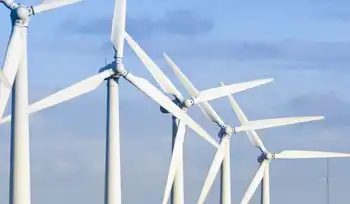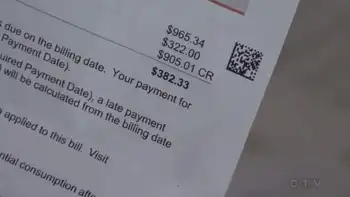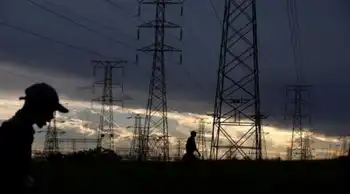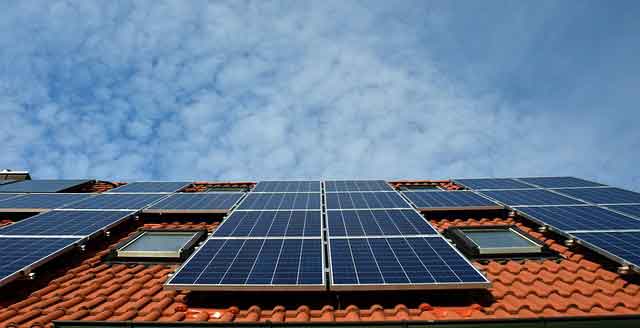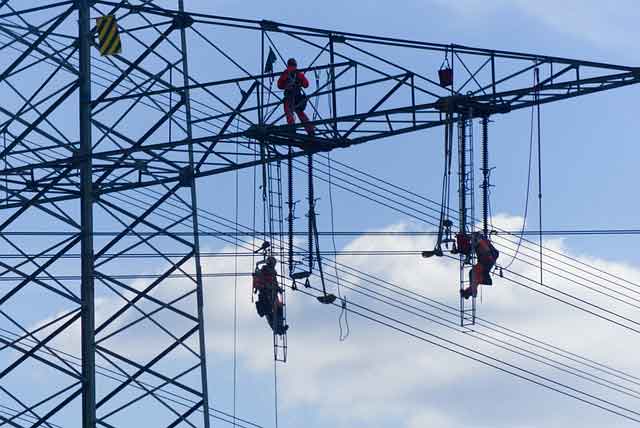Carbon storage? Not under my house!
By Associated Press
High Voltage Maintenance Training Online
Our customized live online or in‑person group training can be delivered to your staff at your location.

- Live Online
- 12 hours Instructor-led
- Group Training Available
They just wish it wasn't right beneath their houses. "Who wants to live in Barendrecht if one of these CO2 things is built?" said retiree Marianne van Heugten.
The carbon dioxide storage experiment by Royal Dutch Shell and the Dutch government is only one of a dozen such projects across Europe to test a technology that could potentially slash emissions of greenhouse gases such as carbon dioxide into the atmosphere by storing it underground.
That would allow countries that have lots of coal, such as China and the United States, to cut emissions while using the cheap but polluting fossil fuel. Carbon dioxide from the burning of such fuels is considered the chief cause of global warming.
But questions remain about the technology and its costs and risks even as the EU prepares to spend billions on it.
If it works, the technology would buy the world time in the fight against global warming by reducing emissions until cleaner energy sources can be developed — and help the EU keep big promises. Just before the global talks on a new climate change pact in Copenhagen, the EU says it is ready to reduce greenhouse gas emissions by up to 95 percent by 2050. The EU thinks carbon storage could shave up to 10 percent off global emissions by 2030 and 20 percent by 2050.
The European Union has pledged some 1.05 billion euros in initial financing and will raise extra funding — likely some 4.5 billion euros — from selling permits to emit greenhouse gases under a cap-and-trade system where companies need to pay to pollute more.
It is also calling for all new coal-fired power stations built after 2020 to be capable of capturing carbon — even if the technology isn't ready to be rolled out by then.
The Dutch government must decide whether to overrule Barendrecht residents objections or push forward with the unknown risks of storage under one of the most densely populated parts of Europe. Most current storage sites are in isolated areas.
The project would pump 10 million metric tons of carbon dioxide starting from 2011 into two depleted gas fields 2 kilometers (more than a mile) under the town. The gas fields are considered by some a safer choice than current experiments under the North Sea and the Sahara Desert where a water-bearing rock layer, or aquifer, is being used.
It's only a trial; Shell says the Netherlands might need to store 30 million metric tons a year by 2025 and the entire country could potentially store 1 billion metric tons.
Some 43,000 people live in Barendrecht, a suburb 18 kilometers (12 miles) from Rotterdam and its port, Europe's busiest. Real estate agent Frits Markus says worries about the project could affect the average 280,000 euros house price. People "will be scared that CO2 will be stored under where they live, they will feel their houses will lose value, and will have trouble selling them."
Carbon dioxide, which provides the fizz in soft drinks, is naturally present in the atmosphere although levels have soared since start of the industrial revolution. Plants take it in and people breathe it out. But a sudden release of large amounts can kill by asphyxiation. Some 1,700 people died when a cloud of carbon dioxide escaped from a volcanic lake in Cameroon in 1986.
A slow leak would simply negate the costly efforts to store the gas. Greenpeace says this could happen if stored carbon dioxide mixes with water underground to from a weak carbonic acid that could corrode pipelines and rocks.
In Barendrecht, town council member Simon Zuurbier says he doesn't fear a blowout under his town, something he says is only likely to happen when carbon dioxide is being injected into the site. But he isn't sure the government will always be able to monitor "eternal storage."
Stuart Haszeldine, a geology professor at the University of Edinburgh, says "nothing like" a dramatic blowout would happen at a depleted gas field because the carbon dioxide would be injected with relatively little extra pressure and only the gas in the borehole — and not the entire site — would be likely to escape.
Such "confined space" oil and gas fields are far safer and easier to monitor, he says, because energy companies understand the geology better than storage at other possible sites like aquifers where the carbon dioxide can move sidewise into the rock with more potential to leak.
Shell's plans to pipe the gas to Barendrecht would turn the town into a waste landfill, claim local campaign group CO2isNee. It's being labeled a dump, of sorts, that seems to anger locals the most.
"The value of houses, that's the real worry here," said resident Herman Bakker.
Barendrecht's town council refused to grant local permits and now worries that the Dutch government could overrule it by citing the national interest. Councilman Zuurbier warned against that.
"Here in Barendrecht there will never be any support for this," he said. "You need a general public support for the success of this new ambition. If you start this new policy with a conflict with Barendrecht... that is a very nasty start for your general public acceptance."
Carbon capture and storage, or CCS, is the hope for the energy industry, European Commission environment official Jos Delbeke told a Brussels conference recently: "No realistic projections beyond 2020 give any hope of turning the global energy sector around without using CCS," he said.
The technology also has the potential to reverse global warming if ways are found to strip the extra CO2 added to the atmosphere in the last 250 years and lock it away underground.
Shell believes that the rock that safely harbored natural gas for millions of years could also be filled with carbon dioxide — and that Barendrecht could show that empty gas fields elsewhere could be used in the same way.
"We need to show you that it works, we need to show you that it's safe to store CO2 underground over long periods of time," said Graeme Sweeney, chief executive of Shell Renewables and chairman of the Zero Emissions Platform — a group of companies, nonprofit groups and academics lobbying for the technology.
Coal already provides 30 percent of the European Union's electricity, half of Germany's and 70 percent of China's power. But it is also the fossil fuel that puts out the most greenhouse gases and climate campaigners say Europe must give it up.
And the technology won't be cheap. Apart from the huge price tags for special equipment, European electricity producers warn it will drive up the cost of electricity because the process of capturing carbon dioxide means the plant must generate 30 percent more energy.
Even environmentalists can't agree. Stephan Singer of environmentalist group WWF-Europe says carbon capture must be explored because fossil fuels aren't going to disappear in the next 20 years. "Coal will unfortunately survive... because of security of supply concerns which are bigger drivers than environmental concerns," he said.
Others such as Greenpeace see carbon capture as an expensive gamble with government money that should be used for renewable energy such as wind or solar.
"Our position is, if companies want to pay to research this technology, to prove that it's safe and effective and can work, they're more than welcome to do so," Emily Rochon of Greenpeace said. "But governments really need to focus on sustainable energy technologies that are available now."
"There are concerns about the ability to safely and permanently store CO2 underground," she said. "The oldest (one) has only been operating for 13 years, and so there's still a lot to learn about CCS."
Even if the technology works at an acceptable price, Rochon says "you still need the public to accept it."





